Just like every other plant lover, you would love to see your plants with all greenish leaves and be healthy, especially if it’s an effective indoor plant, like Philodendron.
Therefore, if you suddenly notice your Philodendron plant get sullen with wilted and bending leaves, naturally you will get anxious about its unhealthy look.
And such concern might incite a question in your mind that why are your Philodendron dropping. So, let us get to the core of this issue and find solutions.
Why Is My Philodendron Drooping?
The root cause behind drooping Philodendron is either overwatering or underwatering. The other most likely reasons that can cause a drooping Philodendron are – excessive heat from sunlight, fertilizer burn, low humidity, repotting shock, and scarcity of essential nutrients (calcium and magnesium).
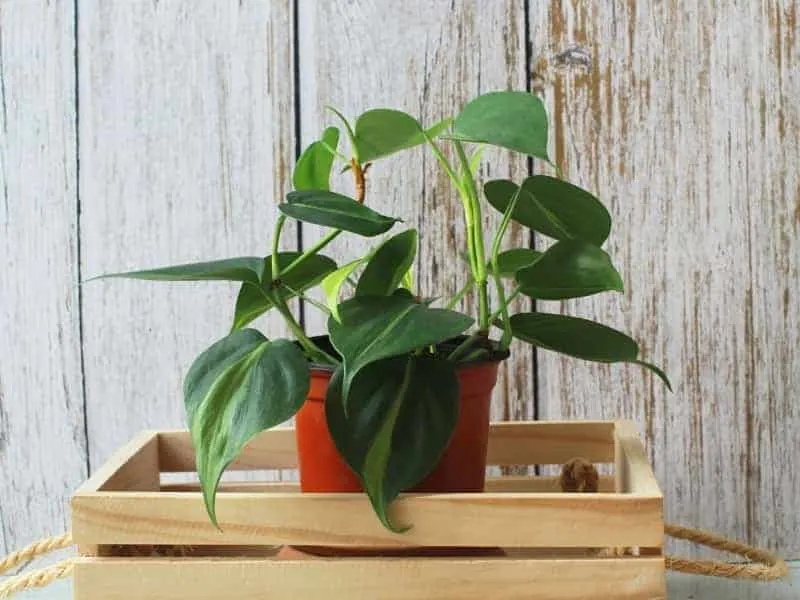
Why Do My Philodendron Leaves Droop/Look Wilted?
Drooping/wilted-looking leaves of Philodendron is a common concern of every Philodendron lover. So to let you all know, this section has included the bottom reasons behind this problem.
Overwatering:
Overwatering is one of the main reasons that your Philodendron plant’s leaves droopy or wilted.
It’s because when you are overwatering your Philodendron plant, you are letting the plant live in waterlogged mushy soil.
Therefore, the watery soil will not let the plant get its needed oxygen from the soil to live, which also will cause root deterioration/fungal invasion.
And as a result, the leaves including old and new will start dropping and look wilted.
Underwatering:
Underwatering is the other main reason that causes droopy/wilted-looking Philodendron plants.
If you are maintaining an inconsistent watering habit, you are making the soil excessively drier than it should be. And no plant can live a healthy life if they don’t get sufficient water for its root to soak from the soil.
So it will make your Philodendron plant lose its turgidity which will cause droopy/wilted leaves.
Loss Of The Turgor Pressure:
Turgor pressure is highly crucial for Philodendron plants because it helps the plant to get air and moisture for the transpiration and photosynthesis process.
So when due to sunburns, edema, or root rot, your Philodendron plant is losing its turgor pressure, the leaves will become droopy and wilted.
Low Humidity:
As Philodendrons are tropical plants, they are habituated to warm and humid environments. Therefore, if you are keeping your Philodendron plant in a place with low humidity, the soil is prone to dry out quickly causing drooping and brown leaves.
Difficulties In Acclimation:
When you are transplanting a water propagate Philodendron plant in soil, its leaves can start drooping.
Because the plant has been physically adapted to living in an underwater environment, so when it’s being repotted in soil, it faces difficulties in adjusting to that area due to more/less lighting and humidity. Therefore under stress, the leaves start getting droopy.
Damaged Fine Roots:
Damaged fine roots during the transplanting process can cause droopy/wilted Philodendron leaves. Because these fine roots of Philodendrons soak necessary water for the plant to thrive healthily.
And these fine roots often get damaged while being transplanted. As a result, the plant can’t absorb enough water and the leaves begin to droop and wilt.
How Do You Save Drooping Philodendrons?
To save your drooping Philodendron plant, here 5 effective tips that have been provided for you.
Acclimate Your Plant:
Acclimate your water propagate Philodendron plant before you transplant it permanently onto the soil.
And to make the plant adjust, the first transplant in a pot and keep it in the new spot a few hours every day and water less so that it can get habituated to live in the soil.
Stop Watering:
If the drooping leaves are caused by overwatering, stop watering for 1-2 weeks or until you feel the soil is dry yet moisture enough. You will notice the leaves bounce back once the soil is dried out.
Place It In A Sink:
When underwatering is the root cause, remove its saucer and take your Philodendron plant to a 3-4 inches water-filled sink to soak water.
Let it absorb water for 45 minutes or more and check the soil every day to know if 2-3 inches of the soil top has gotten enough moisture. And it’s done, replace it onto the saucer again.
Continuous Misting:
If the Philodendron plant is drooping on the way to your home while the replanting process, keep misting its roots and foliage with water. And wrap the foliage with a clear plastic bag to reduce water loss.
Increase Humidity:
Increase the humidity up to 40% or more by misting its leaves every day, by using a home humidifier, or by placing it on humidity to save it from drooping.
Why Do These Philodendron Species Droop And How To Fix Them?
Since there are various species of Philodendron plants, this section has included the names and short explanations about their drooping reasons and droop fixing ways.
Philodendron Birkin:
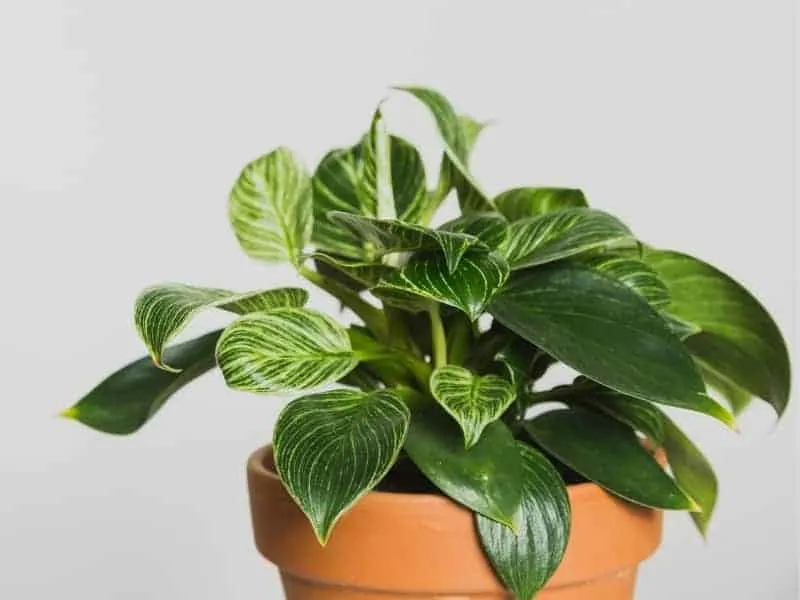
Underwatering can cause Philodendron Birkin’s leaves to start drooping as these plants require hydration and damp soil.
So to fix a drooping Philodendron Birkin, you have to water the plant 1-2 times a week and have to make sure the soil has enough moisture. And keep the room’s temperature at 18°c-24°c during daytime and 16°c at night.
Philodendron Brasil/Heart Leaf Philodendron:
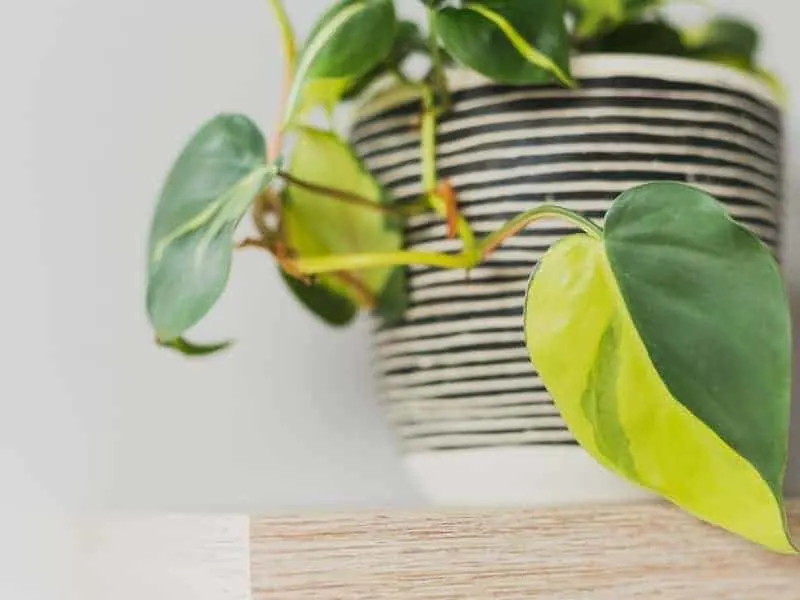
Heart Leaf Philodendrons are sensitive to root rot due to poorly draining soil, overuse of fertilizer, direct sunlight, and overwatering. Any of these reasons can cause droopy Philodendron Brasil/Heart Leaf Philodendron plants.
To fix these problems and revive your plant, you have to stop overwatering, stop overusing fertilizer directly on the plants and have to keep under indirect sunlight.
Split Leaf Philodendron Hope Selloum:
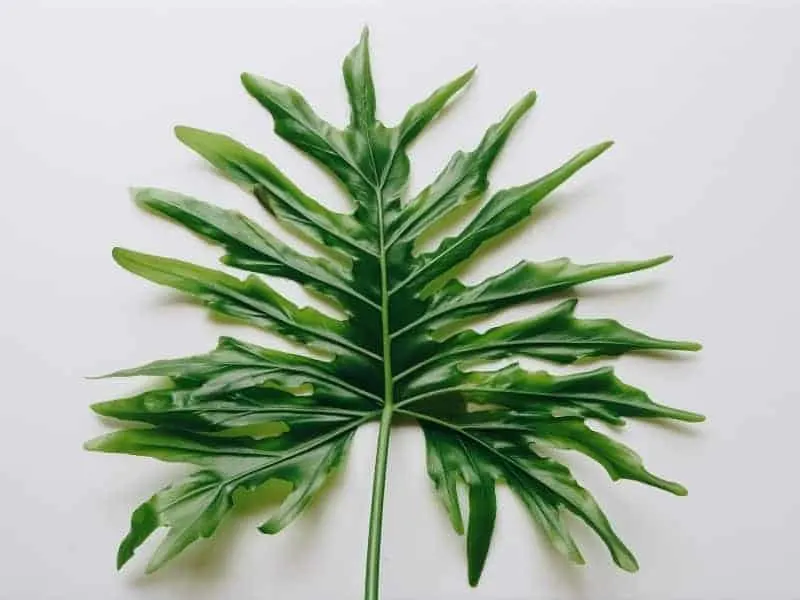
Overwatering or underwatering is the main reason behind drooping Split Leaf Philodendron Hope Selloum. Also, scarcity of enough sunlight is the other reason why this plant can have droopy leaves.
To save your drooping Split Leaf Philodendron Hope Selloum, you should water it only when the 2-3 top layers of the soil feel dry. If the soil feels really damp, avoid watering.
And keep the plant in an environment with 16-24°c temperature and in a spot with indirect bright sunlight.
Philodendron Congo:
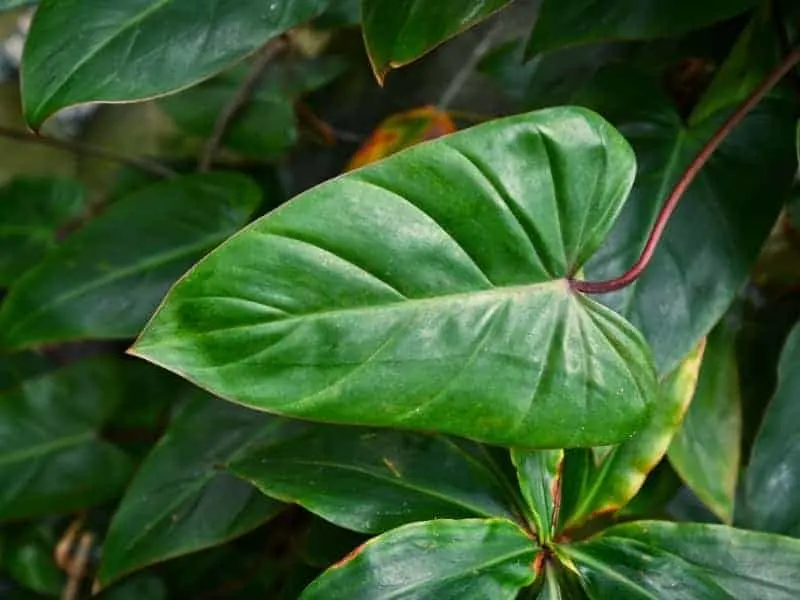
Underwatering, repotting, low humidity, and direct sunlight can result in droopy leaves of Philodendron Congo.
To revive this plant, you need to water it consistently 1-2 times a week and have to keep it under indirect sunlight.
Also, increase the humidity of your home to 40-60% and after repotting make sure the plant is slightly watered.
Philodendron Prince Of Orange:
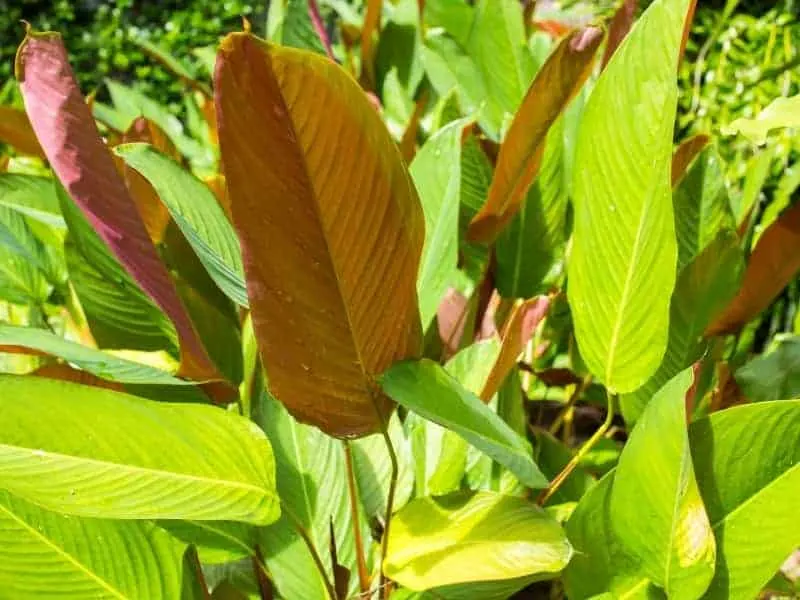
Extra bright sunlight and low temperature are the main culprits that cause the Philodendron Prince of Orange to have droopy leaves.
To keep your Plant alive, first, you must start keeping it at 21°C temperature throughout the whole year and in a special situation at least at 13°C.
Besides, keep the plant in shade with subtle sunlight.
Philodendron Xanadu:
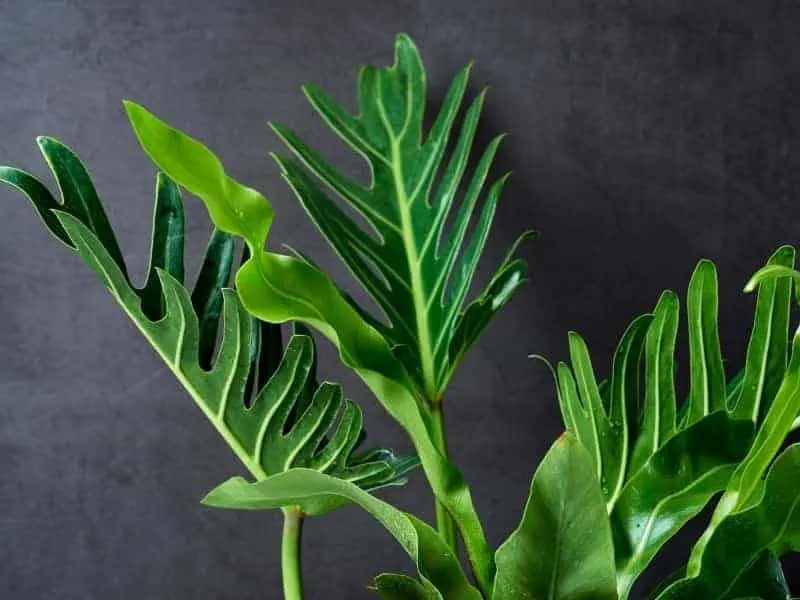
Drooping Philodendron Xanadu is a result of either watering issues or bugs/pests.
In order to bring a wilted-looking droopy Philodendron Xanadu, repot the plant to get rid of bugs/pests or correct your watering routine.
Philodendron Pink Princess:
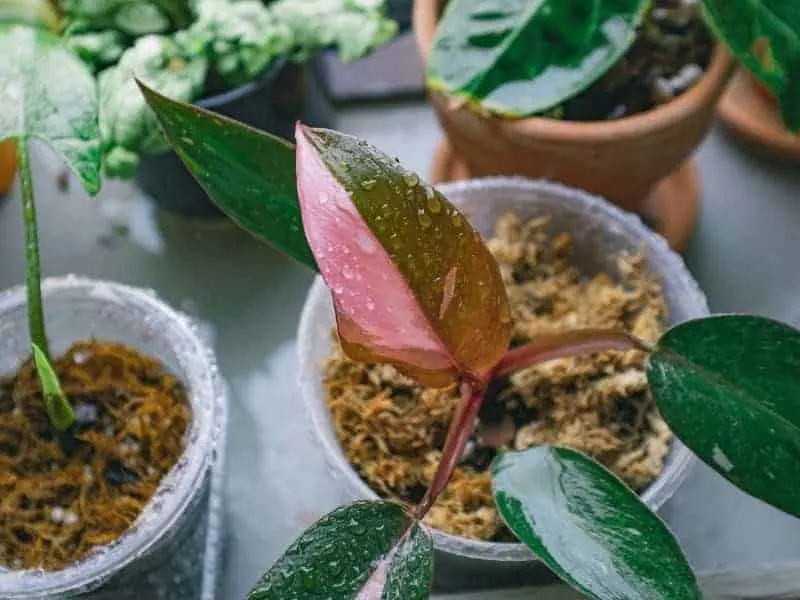
An unhappy droopy and withered Philodendron Pink Princess is a sign of overwatering or underwatering.
Correcting your watering routine and regular checking of the soil are the solutions that can save your plant.
Philodendron Rojo Congo:
Soggy soil is the principal reason that causes the Philodendron Rojo Congo plant to have limping leaves.
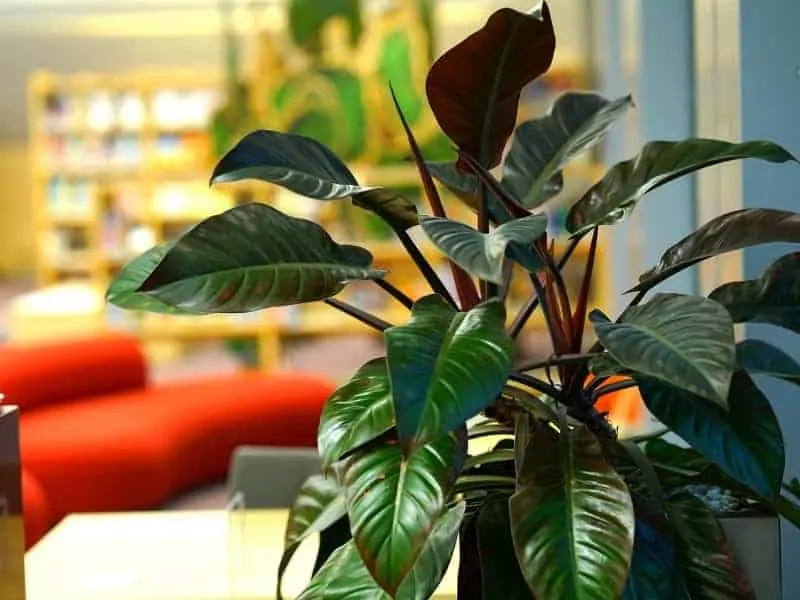
To restore this plant, you have to stop overwatering and make the soil dry for few days. Also, you must keep checking the moisture level of soil in between this period.
How Often And How Much Should I Water My Philodendron?
Usually, you should water your Philodendron plant once every 1-2 weeks and it’s optimal for the plant. Because it meets the needs of the Philodendron plant without jeopardizing the root deterioration.
Also, every 1-2 weeks mist the leaves to build a humid micro-environment which will impersonate the natural habitat of the plant.
And you should water your Philodendron as much as you can feel the soil’s moisture level up to 2-3 inches after watering the plant. So after watering, dip your two fingers in the soil and detect the moisture level.
Nice you feel it’s moisture enough (not overwatered), stop watering
How To Tell If Philodendron Needs More Water?
You can effortlessly assume whether a Philodendron needs more water or not by observing the plant’s leaves. If you see your Philodendron is appearing with an unhealthy appearance and drooping leaves, it means the plant needs more water.
Philodendron with yellow leaves is also a red flag to let you know that the plant needs more watering.
Besides, another way is dipping your two fingers in the soil, if you feel the top 2-3 inches of the plant’s soil is dry, it indicates that the Philodendron plant needs more watering.
How To Tell If A Philodendron Is Overwatered?
There are 3 signs to understand whether or not a Philodendron plant is overwatered.
The first sign is, if you see your Philodendron plant’s leaves are developing limping yellow or brown leaves, it means the plant is overwatered. Because wilting leaves of Philodendron signifies that the root cannot soak water anymore.
The second sign is over moist soil and over time you will notice fungus or mold to grow on the soil’s top.
The third and the last sign is, your Philodendron plant will start dropping both old brown/yellow leaves and new green leaves.
If any of the signs occur, know that your Philodendron plant is overwatered.
How Do I Know If My Philodendron Is Still Alive?
You can know if your Philodendron is still alive or not by checking the stems of the dried-looking plant. If you see that the plant’s stems are still supple and firm, and have green cast inside the stems, this condition indicates that the plant is alive.
However, if the stems of your Philodendron seem mushy, the fastest way to know if the plant is alive or not is by checking its root’s condition. If you notice the condition of the root is still pliable but in a firm condition, it means the plant is alive.
Regardless of the species, overwatering or underwatering is always the main reason that can cause droopy Philodendron leaves. Therefore, along with other issues, correct this issue to have a healthy Philodendron plant.
Frequently Asked Questions:
Can Philodendron Grow Outside?
Do Philodendron Like to Be Root Bound?
